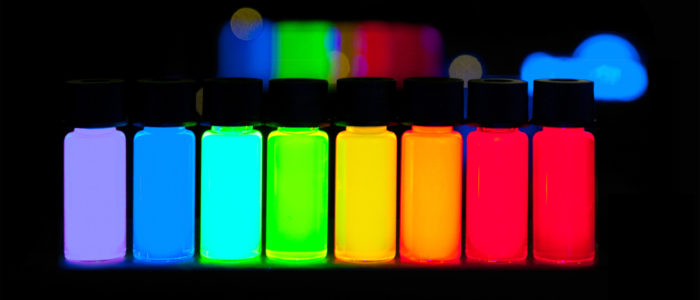In a time of ocean acidification, melting polar ice caps, and environmental health crises like those in Flint, Michigan, the importance of environmentally friendly chemical and industrial processes has never been greater. Still, even in 2019, the United States feels government push-back against policy that regulates detrimental action toward the environment.1 Intervention is necessary to remedy and prevent greater harm to our waterways, atmosphere, and bodies. One such remedy manifests itself to chemists by way of an emerging branch of chemistry: green chemistry.
Where Does "Green Chemistry" Come From?

Anastas and Warner, two distinguished synthetic organic chemists, defined green chemistry as “the [utilization] of a set of principles that reduces or eliminates the use or generation of hazardous substances in the design, manufacture and application of chemical products” in their groundbreaking book Green Chemistry in 1998.2
Around the same time, society began to notice the severe consequences of global climate change, further sparking interest in this emerging branch of chemistry. Unfortunately, that interest has since been confined to industrial circles, and the adoption of strategies that adhere to green chemistry has not been widespread across all chemical disciplines.
This generation of scientists has an obligation to be more conscious of their eco-footprint. By simply “reducing… the generation of hazardous substances,” we can unite to fight the repercussions of global climate change.2
A Need For Change
It would be unrealistic to expect drastic change across all branches of chemistry, physical, analytical, organic, inorganic, and biochemistry, overnight. However, basic changes to everyday research can be altered to be more environmentally-friendly and adhere to green chemistry guidelines. The American Chemical Society recently published “12 Design Principles of Green Chemistry” that further detail how chemists of all backgrounds can contribute to the green chemistry effort.3 The 12 principles are summarized as follows:
- Prevent waste rather than clean up unnecessary waste
- Minimize by-products
- Design less hazardous syntheses
- Use less toxic reagents
- Use safer solvents
- Be conscious of energy requirements
- Use renewable materials
- Reduce need for additional reagents
- Catalytic amounts are superior to stoichiometric amounts
- Products should be bio-degradable
- Analyze immediately to eliminate potential for hazardous waste creation
- Minimize chemical accident potential.

These principles address measures that any chemist, from a physical chemist working with lasers to a synthetic organic chemist working with carboxylic acid derivatives, can take to minimize their environmental impact while still maintaining a productive research space. For example, that physical chemist can perhaps design an experiment to use a less powerful laser, and that organic chemist can run a synthesis in a less toxic solvent. These are the components of green chemistry that can and should be applied to the chemistry sphere. We are in a position to alter the future of chemistry, and we must enact green chemistry principles in order to ensure that the future of chemistry even exists.
Industry might have It Right
Maybe surprisingly, industrial giants were the first to adopt green chemistry principles nearly two decades ago.4 Nike, Johnson & Johnson, and Pfizer are just some examples of large corporations that are paving the way to the betterment of our world. And, unsurprisingly, in just shy of 10 years, the amount of chemical waste released into our ecosystems has decreased by 7%, and the release of the more toxic chemicals has plummeted by more than 60%.4 The EPA, who carried out this study, attributes much of this change to industry devotion to fighting the toxic consequences of environmentally irresponsible work, of course in accordance with new regulations that require a greener approach to manufacturing.4,5

Although some may disagree with imposing regulations onto industry, the numbers imply that not only do these regulations, like limiting the access to fossil fuels in manufacturing, help to promote a cleaner world, but they also create new jobs and bring in more money for the company.5 So, perhaps academia should look to industry for inspiration and impose its own rules onto research groups. Imagine the impact if everyone enacted green chemistry principles!
Toward A Better World
The need for green chemistry is at an all-time high, and should no action be taken or mandated by research institutions, dire consequences will be seen on the environment. The adoption of such principles, even in a small scale, is facile. Therefore, it is not too optimistic to hope that green chemistry principles will be incorporated into every research and industry laboratory, although we can only accomplish so much change as members of such a small portion of the population. Truly, in order to begin remedying the growing impact of global climate change on a large scale, industry and academia need to come together to establish an understanding: we need to approach chemistry more holistically and take responsibility to be more environmentally conscious in our work space.
- Zukowski, K. “Top 10 Policy Fights We’re Watching in 2019.” Environmental Defense Fund. 2019.
- Anastas, P.T.; Warner, J.C. Green Chemistry. 1998.
- The American Chemical Society. “12 Design Principles of Green Chemistry.”
- The American Chemical Society. “How Industrial Applications in Green Chemistry Are Changing Our World.”
- Heintz, J.; Pollin, R. “The Economic Benefits of a Green Chemical Industry in the United States.” 2011.






I was thinking about this article the whole time I was in “waste management training” last week. LLNL takes its environmental footprint really seriously, and “green chemistry” has shaped a lot of their laboratory policies 🙂
Chemistry with a heart and a brain. When I tutor undergrad labs I always think about waste disposal and how critical it is to set good trends early. Managing waste efficiently is arguably on par with lab safety and it’s an encouraging thing to see people pick up. Great work.
Irregular color, blemished skin, and liver spots are what is going to allow you
to look older, weary, and worn-out. With the Speed
Circuit the ball specified is simply a flashing ball which enhances the cat’s amusement.
Now allow that cool air to expand your cavity, an incredible massage for all of your abdomenal organs.